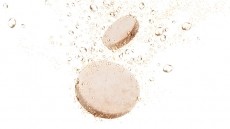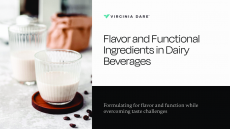Sweetener study shows no cancer link in humans
indication of an association between sweetener consumption and
cancer risk - findings that lend some support to EFSA's conclusions
on the safety of aspartame.
Fears have existed over a potential link between some sweeteners and cancer since the 1970s, but worrying results of animal studies linking saccharine to bladder cancer were not reproduced in humans.
Less is known about other sweeteners such as aspartame and cyclamate.
In particular safety of aspartame has been called into question in the recent past, as researchers at Ramazzini's cancer research centre in Italy caused a stir in 2005 by claiming that their study indicated that aspartame consumption by rats leads to increase in lymphomas and leukaemias in females at dose levels "very near those to which humans can be exposed" .
However after evaluating the study the European Food Safety Authority issued its opinion last may, that there is no need for a further safety review of aspartame nor a revision of the acceptable daily intake (40 mg/kg body weight).
Researchers from the Istituto di Ricerche Farmacologiche Mario Negri in Milan, Italy, said that animal data have received widespread attention since there is limited epidemiological data for humans on sweeteners other than saccharine.
For their study, published in January in the Annals of Oncology , they set out "to provide additional information on saccharin and other sweeteners (mainly aspartame)".
Led by Dr Silvano Gallus, the researchers considered data from a network of case-controlled studies conduced in Italy between 1991 and 2004.
The case-controlled studies involved 598 patients with cancer of the oral cavity and pharynx, 304 of the oesophagus, 1225 of the colon, 728 of the rectum, 460 of the larynx, 2569 of the breast, 1031 of the ovary, 1294 of the prostate and 767 of the kidney.
The controls were 7028 patients admitted to hospital with acute, non-neoplastic disorders.
When the level of sweetener consumption was compared between the cancer sufferers and non-cancer sufferers, no significant correlation was found.
Moreover, in the case of breast and ovarian cancer, a significant inverse trend for increasing categories of total sweeteners was found - and a direct one for laryngeal cancer.
"The present work indicates a lack of association between saccharin, aspartame and other sweeteners and the risk of several common neoplasms," wrote Dr Gallus.
Such a study does have its limitations - most notably that there was no information on the specific sweeteners besides saccharine (although the researchers cited a study on 212 Italian teenagers, which found that aspartame was by far the most consumed sweetener, with 76 per cent of the sample.)
Overall, though, consumption of sweeteners is relatively low in the Italian population, so despite the large size of the study the data have "relatively limited statistical power".
There was also no information gathered on the use of dietetic soft drinks, but since such products are relatively new in Italy the researchers did not think this omission would have much effect on the results.
Despite these drawbacks, the findings are in line with other recent research, including a US study sponsored by the National Cancer Institute involving 340,045 men and 226,945 women, ages 50 to 69, which found no statistically significant link between aspartame consumption and leukemias, lymphomas or brain tumors.
In terms of world consumption, the artificial sweetener represents 62 per cent of the value of the intense sweetener market, and is believed to be found in around 6,000 products worldwide, including carbonated and powdered soft drinks, hot chocolate, chewing gum, candy, desserts, yogurt, tabletop sweeteners, and some pharmaceutical products, such as vitamins and sugar-free cough drops.
Aspartame was first authorised for use by several EU member states in the 1980s.
European legislation harmonising its use in foodstuffs was introduced in 1994 following safety evaluations in 1984, 1987, 1988.
A further review of all the original and more recent data on aspartame was carried out in 2002 by the bloc's food regulator.
Reference Publication: The Annals of Oncology Doi:10.1093/annonc/mdl346 Title: " Artificial sweeteners and cancer risk in a network of case-control studies" Authors: S. Gallus, L. Scotti, E. Negri, R. Talamini, S. Franceschi, M. Montella, A. Giacosa, L. Dal Maso & C. La Vecchia.












